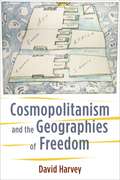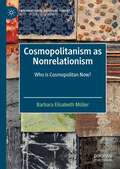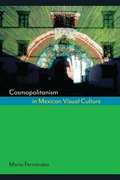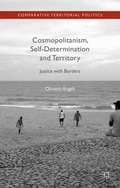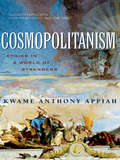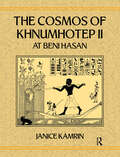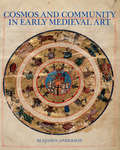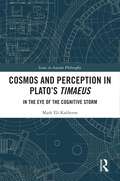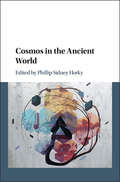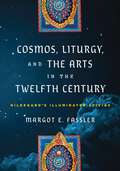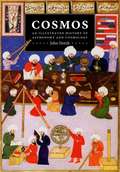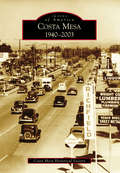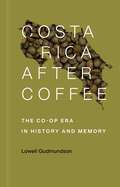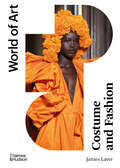- Table View
- List View
Cosmopolitanism and the Geographies of Freedom
by David HarveyLiberty and freedom are frequently invoked to justify political action. Presidents as diverse as Woodrow Wilson, Franklin Delano Roosevelt, John F. Kennedy, Ronald Reagan, and George W. Bush have built their policies on some version of these noble values. Yet in practice, idealist agendas often turn sour as they confront specific circumstances on the ground. Demonstrated by incidents at Abu Ghraib and Guantánamo Bay, the pursuit of liberty and freedom can lead to violence and repression, undermining our trust in universal theories of liberalism, neoliberalism, and cosmopolitanism. Combining his passions for politics and geography, David Harvey charts a cosmopolitan order more appropriate to an emancipatory form of global governance. Political agendas tend to fail, he argues, because they ignore the complexities of geography. Incorporating geographical knowledge into the formation of social and political policy is therefore a necessary condition for genuine democracy. Harvey begins with an insightful critique of the political uses of freedom and liberty, especially during the George W. Bush administration. Then, through an ontological investigation into geography's foundational concepts& mdash;space, place, and environment& mdash;he radically reframes geographical knowledge as a basis for social theory and political action. As Harvey makes clear, the cosmopolitanism that emerges is rooted in human experience rather than illusory ideals and brings us closer to achieving the liberation we seek.
Cosmopolitanism as Nonrelationism: Who is Cosmopolitan Now? (International Political Theory)
by Barbara Elisabeth MüllerThis book suggests that more can be said about cosmopolitanism than either the bold endorsement of a world state or the humble recognition of the equal moral worth of individuals, which makes everybody cosmopolitan. Identifying problems with the traditional concept and disentangling a variety of positions within the cosmopolitan paradigm, it introduces the more refined concept of cosmopolitanism as nonrelationism, which denies underived special duties among fellow citizens or other related individuals, such as family members or friends.Cosmopolitanism as nonrelationism promises to overcome an entrenched debate wherein everybody is a cosmopolitan, and brings back the radical character traditionally associated with the term. It portrays cosmopolitanism as a distinct and thorough position challenging classic proponents such as Barry, Caney, Nussbaum, and Pogge, and questioning their theories’ cosmopolitan character. Cosmopolitanism as nonrelationism has consequences for world politics without prescribing any unfeasible global order: It establishes normative criteria for evaluating institutions and provides guidance for the development of new ones.
Cosmopolitanism in Mexican Visual Culture
by María FernándezShe argues that in Mexico, as in other colonized regions, colonization constructed power dynamics and forms of violence that persisted in the independent nation-state. Accordingly, Fernández presents not only the visual qualities of objects, but also the discourses, ideas, desires, and practices that are fundamental to the very existence of visual objects.
Cosmopolitanism, Self-Determination and Territory
by Oliviero AngeliRights over territory are to most cosmopolitans nowadays what private property was to nineteenth-century socialists: a legally sanctioned institutionalization of theft. In the cosmopolitan imagination, territories are reminiscent of a long history of unlawful acts and their boundaries do nothing but draw arbitrary distinctions between populations. This study moves beyond this picture of territory as a mere object of domination and exploitation to offer a new perspective on the traditional cosmopolitan understanding of territory. It explores the process by which people constitute themselves as territorially defined political communities and argues that the ideal of collective self-determination incorporates a legally and politically inclusive notion of territories as non-ascriptive markers of belonging. By examining the implications of this argument, the text addresses controversial issues of contemporary political philosophy: citizenship, immigration, natural resources and, more generally, global distributive justice.
Cosmopolitanism: Ethics in a World of Strangers (Issues of Our Time) (Issues of Our Time #0)
by Kwame Anthony Appiah"A brilliant and humane philosophy for our confused age."--Samantha Power, author of A Problem from Hell Drawing on a broad range of disciplines, including history, literature, and philosophy--as well as the author's own experience of life on three continents--?Cosmopolitanism? is a moral manifesto for a planet we share with more than six billion strangers.
Cosmopolitanisms and the Jews
by Cathy Gelbin Sander GilmanCosmopolitanisms and the Jews adds significantly to contemporary scholarship on cosmopolitanism by making the experience of Jews central to the discussion, as it traces the evolution of Jewish cosmopolitanism over the last two centuries. The book sets out from an exploration of the nature and cultural-political implications of the shifting perceptions of Jewish mobility and fluidity around 1800, when modern cosmopolitanist discourse arose. Through a series of case studies, the authors analyze the historical and discursive junctures that mark the central paradigm shifts in the Jewish self-image, from the Wandering Jew to the rootless parasite, the cosmopolitan, and the socialist internationalist. Chapters analyze the tensions and dualisms in the constructed relationship between cosmopolitanism and the Jews at particular historical junctures between 1800 and the present, and probe into the relationship between earlier anti-Semitic discourses on Jewish cosmopolitanism and Stalinist rhetoric.
Cosmos Of Khnumhotep
by KamrinFirst published in 1999. Routledge is an imprint of Taylor & Francis, an informa company.
Cosmos and Community in Early Medieval Art
by Benjamin AndersonIn the rapidly changing world of the early Middle Ages, depictions of the cosmos represented a consistent point of reference across the three dominant states--the Frankish, Byzantine, and Islamic Empires. As these empires diverged from their Greco-Roman roots between 700 and 1000 A. D. and established distinctive medieval artistic traditions, cosmic imagery created a web of visual continuity, though local meanings of these images varied greatly. Benjamin Anderson uses thrones, tables, mantles, frescoes, and manuscripts to show how cosmological motifs informed relationships between individuals, especially the ruling elite, and communities, demonstrating how domestic and global politics informed the production and reception of these depictions. The first book to consider such imagery across the dramatically diverse cultures of Western Europe, Byzantium, and the Islamic Middle East, Cosmos and Community in Early Medieval Art illuminates the distinctions between the cosmological art of these three cultural spheres, and reasserts the centrality of astronomical imagery to the study of art history.
Cosmos and Perception in Plato’s Timaeus: In the Eye of the Cognitive Storm (Issues in Ancient Philosophy)
by Mark Eli KalderonThis volume offers a wide-ranging study on perception in the Timaeus, not only discussing senses such as touch, taste, and olfaction alongside audition and vision but also engaging with Timaeus’ wider cosmological project. Most studies of perception in the Timaeus focus on a few narrow passages on vision and audition. By taking the broader approach of this volume, important lessons about the nature of perception may be gleaned from Timaeus’ cosmogony, psychogony, and anthropogony. While there is an emerging modern consensus that the Timaeus should be read literally, this study argues against a literal interpretation of the spatial and kinetic properties of the soul in favour of a metaphorical understanding. Not only does this yield a rich account of the intentionality of cognition but also sheds light onto the nature of the soul-body union. In addition, this volume argues for the largely overlooked significance of Timaean anatomy, as it contributes to our understanding of the providential scheme of Timaeus’ cosmology more generally. Cosmos and Perception in Plato’s Timaeus is of interest to students and scholars of the Timaeus and Plato’s thought more broadly, as well as those working on ancient theories of perception and the philosophy of mind.
Cosmos in the Ancient World
by Phillip Sidney HorkyHow did the ancient Greeks and Romans conceptualise order? This book answers that question by analysing the formative concept of kosmos ('order', 'arrangement', 'ornament') in ancient literature, philosophy, science, art, and religion. This concept encouraged the Greeks and Romans to develop theories to explain core aspects of human life, including nature, beauty, society, politics, the individual, and what lies beyond human experience. Hence, Greek kosmos, and its Latin correlate mundus, are subjects of profound reflection by a wide range of important ancient figures, including philosophers (Parmenides, Empedocles, the Pythagoreans, Democritus, Plato, Aristotle, the Stoics, Lucretius, Cicero, Seneca, Plotinus), poets and playwrights (Sophocles, Euripides, Aristophanes, Plautus, Marcus Argentarius, Nonnus), intellectuals (Gorgias, Protagoras, Varro), and religious exegetes (Philo, the Gospel Writers, Paul). By revealing kosmos in its many ancient manifestations, this book asks us to rethink our own sense of 'order', and to reflect on our place within a broader cosmic history.
Cosmos, Liturgy, and the Arts in the Twelfth Century: Hildegard's Illuminated "Scivias" (The Middle Ages Series)
by Margot E. FasslerIn Cosmos, Liturgy, and the Arts in the Twelfth Century, Margot E. Fassler takes readers into the rich, complex world of Hildegard of Bingen’s Scivias (meaning “Know the ways”) to explore how medieval thinkers understood and imagined the universe. Hildegard, renowned for her contributions to theology, music, literature, and art, developed unique methods for integrating these forms of thought and expression into a complete vision of the cosmos and of the human journey. Scivias was Hildegard’s first major theological work and the only one of her writings that was both illuminated and copied by scribes from her monastery during her lifetime. It contains not just religious visions and theological commentary, but also a shortened version of Hildegard’s play Ordo virtutum (“Play of the virtues”), plus the texts of fourteen musical compositions.These elements of Scivias, Fassler contends, form a coherent whole demonstrating how Hildegard used theology and the liturgical arts to lead and to teach the nuns of her community. Hildegard’s visual and sonic images unfold slowly and deliberately, opening up varied paths of knowing. Hildegard and her nuns adapted forms of singing that they believed to be crucial to the reform of the Church in their day and central to the ongoing turning of the heavens and to the nature of time itself. Hildegard’s vision of the universe is a “Cosmic Egg,” as described in Scivias, filled with strife and striving, and at its center unfolds the epic drama of every human soul, embodied through sound and singing. Though Hildegard’s view of the cosmos is far removed from modern understanding, Fassler’s analysis reveals how this dynamic cosmological framework from the Middle Ages resonates with contemporary thinking in surprising ways, and underscores the vitality of the arts as embodied modes of theological expression and knowledge.
Cosmos, Self, and History in Baniwa Religion: For Those Unborn
by Wright Robin M.In this ethnography of Baniwa religion, Robin M. Wright explores the myths of creation and how they have been embodied in religious movements and social action—particularly in a widespread conversion to evangelical Christianity. He opens with a discussion of cosmogony, cosmology, and shamanism, and then goes on to explain how Baniwa origin myths have played an active role in shaping both personal and community identity and history. He also explores the concepts of death and eschatology and shows how the mythology of destruction and renewal in Baniwa religion has made the Baniwa people receptive to both Catholic and Protestant missionaries.
Cosmos: An Illustrated History of Astronomy and Cosmology
by John D. NorthFor millennia humans have studied the skies to help them grow crops, navigate the seas, and earn favor from their gods. We still look to the stars today for answers to fundamental questions: How did the universe begin? Will it end, and if so, how? What is our place within it? John North has been examining such questions for decades. In Cosmos, he offers a sweeping historical survey of the two sciences that help define our place in the universe: astronomy and cosmology. Organizing his history chronologically, North begins by examining Paleolithic cave drawings that clearly chart the phases of the moon. He then investigates scientific practices in the early civilizations of Egypt, Greece, China, and the Americas (among others), whose inhabitants developed sophisticated methods to record the movements of the planets and stars. Trade routes and religious movements, North notes, brought these ancient styles of scientific thinking to the attention of later astronomers, whose own theories-- such as Copernicus' planetary theory-- led to the Scientific Revolution. The work of master astronomers, including Ptolemy, Galileo, Kepler, and Newton, is described in detail, as are modern-day developments in astrophysics, such as the advent of radio astronomy, the brilliant innovations of Einstein, and the many recent discoveries brought about with the help of the Hubble telescope. This new edition brings North's seminal book right up to the present day, as North takes a closer look at last year's reclassification of Pluto as a "dwarf" planet and gives a thorough overview of current research. With more than two hundred illustrations and a comprehensive bibliography, Cosmos is the definitive history of astronomy and cosmology. It is sure to find an eager audience among historians of science and astronomers alike.
Cossacks and the Russian Empire, 1598-1725: Manipulation, Rebellion and Expansion into Siberia (Routledge Studies in the History of Russia and Eastern Europe #Vol. 8)
by Christoph WitzenrathUsing a wide range sources, this book explores the ways in which the Russians governed their empire in Siberia from 1598 to 1725. Paying particular attention to the role of the Siberian Cossaks, the author takes a thorough assessment of how the institutions of imperial government functioned in seventeenth century Russia. It raises important questions concerning the nature of the Russian autocracy in the early modern period, investigating the neglected relations of a vital part of the Empire with the metropolitan centre, and examines how the Russian authorities were able to control such a vast and distant frontier given the limited means at its disposal. It argues that despite this great physical distance, the representations of the Tsar’s rule in the symbols, texts and gestures that permeated Siberian institutions were close at hand, thus allowing the promotion of political stability and favourable terms of trade. Investigating the role of the Siberian Cossacks, the book explains how the institutions of empire facilitated their position as traders via the sharing of cultural practices, attitudes and expectations of behaviour across large distances among the members of organisations or personal networks.
Costa Mesa: 1940-2003 (Images of America)
by Costa Mesa Historical SocietyPerhaps no one could have foreseen the amazing transformation of Costa Mesa from a sleepy rancho to today's bustling "City of the Arts." Along with other Orange County cities, Costa Mesa experienced explosive growth, redevelopment, county bankruptcy, traffic, and environmental issues. While navigating these events, Costa Mesa emerged with its own brand of Southern California cityhood. World War II brought the Santa Ana Army Air Base (SAAAB) to town, along with 125,000 cadets. Postwar SAAAB conversion established the Orange County Fairgrounds, colleges, and housing. After incorporation in 1953, the race was on to achieve critical mass while surrounded by older, established cities. The Segerstrom family led the way to world-class facilities, such as South Coast Plaza and the Orange County Performing Arts Center. These venues shifted the city center from the traditional downtown to north Costa Mesa. Located at the confluence of three freeways and adjacent to John Wayne-Orange County Airport, Costa Mesa faces the future as the center of the South Coast Metro complex.
Costa Rica After Coffee: The Co-op Era in History and Memory
by Lowell GudmundsonCosta Rica After Coffee explores the political, social, and economic place occupied by the coffee industry in contemporary Costa Rican history. In this follow-up to the 1986 classic Costa Rica Before Coffee, Lowell Gudmundson delves deeply into archival sources, alongside the individual histories of key coffee-growing families, to explore the development of the co-op movement, the rise of the gourmet coffee market, and the societal transformations Costa Rica has undergone as a result of the coffee industry’s powerful presence in the country.While Costa Rican coffee farmers and co-ops experienced a golden age in the 1970s and 1980s, the emergence and expansion of a gourmet coffee market in the 1990s drastically reduced harvest volumes. Meanwhile, urbanization and improved education among the Costa Rican population threatened the continuance of family coffee farms, because of the lack of both farmland and a successor generation of farmers. As the last few decades have seen a rise in tourism and other industries within the country, agricultural exports like coffee have ceased to occupy the same crucial space in the Costa Rican economy. Gudmundson argues that the fulfillment of promises of reform from the co-op era had the paradoxical effect of challenging the endurance of the coffee industry.
Costalegre
by Courtney MaumIt is 1937, and Europe is on the brink of war. In the haute-bohemian circles of Austria, Germany, and Paris, Hitler is circulating a most-wanted list of “cultural degenerates”—artists, writers, and thinkers whose work is deemed antithetical to the new regime. <P><P>To prevent the destruction of her favorite art (and artists), the impetuous American heiress and modern art collector, Leonora Calaway, begins chartering boats and planes for an elite group of surrealists to Costalegre, a mysterious resort in the Mexican jungle, where she has a home. <P><P>The story of what happens to these artists when they reach their destination is told from the point of view of Lara, Leonora’s neglected 15-year-old daughter, who has been pulled out of school to follow her mother to Mexico. Forced from a young age to cohabit with her mother’s eccentric whims, tortured lovers, and entourage of gold-diggers, Lara suffers from emotional, educational, and geographical instability that a Mexican sojourn with surrealists isn’t going to help. But when she meets the outcast Dadaist sculptor Jack Klinger, a much older man who has already been living in Costalegre for some time, Lara thinks she might have found the love and understanding she so badly craves. <P><P>Sinuous and striking, heartbreaking and strange, Costalegre is heavily inspired by the real-life relationship between the heiress Peggy Guggenheim and her daughter, Pegeen. Acclaimed author Courtney Maum triumphs with this wildly imaginative and curiously touching story of a privileged teenager who has everything a girl could wish for—except for a mother who loves her back.
Costanza: 'Striking fictional retelling of this true history' – Sunday Times
by Rachel Blackmore'In Blackmore's striking fictional retelling of this true history, Costanza refuses to accept a fate as nothing more than a victim of male exploitation' SUNDAY TIMES, BEST HISTORICAL FICTION'Emotionally intense' DAILY MAIL'A stunning, visceral portrait of a woman and her life and a story as relevant now as it was then. I was gripped' JENNIE GODFREY'Wonderful... This novel took over my life for the time I was buried in it. Powerful and deeply affecting' PATERSON JOSEPHRome, 1636: In the scorched city of Rome, the cobbled streets hum with gossip and sin...Costanza Piccolomini is a respectable young wife - until she meets Gianlorenzo Bernini, the famed sculptor and star of Roman society, whose jet-black gaze matches his dark temper. From the second they set eyes upon each other, a fatal attraction is born.Their secret love burns with a passion that consumes them. But with every stolen kiss and illicit tryst, Costanza's reputation is at stake. Meanwhile, Bernini has a dangerous desire: he wants to make Costanza immortal. He vows to possess her not just in body and soul, but also in marble.When Bernini unveils his sculpture of Costanza, she is exposed as his lover, marking the undoing of their affair - and the beginning of a scandal which will rock Roman society. For Bernini would rather destroy Costanza than let her go.Betrayed. Abandoned. Banished. This was meant to be the end of Costanza's story. But Costanza is no ordinary woman: from the ashes, she will rise...History calls her a Muse. Temptress. Fallen woman. This is her story. Costanza is a dizzying, sensual novel that brings to life a feminist icon who has been written out of history. This utterly addictive tale of desire and betrayal is perfect for fans of The Marriage Portrait and The Miniaturist.'I loved it... Rich and evocative in its portrayal of 17th Century Rome. A fabulous, evocative novel' Elizabeth Chadwick'From the first page I was hooked. Love, lust, fury and betrayal leap from the page. This is a must-read for anyone who wants to read a true feminist retelling' Louise Hare, author of This Lovely City'This has to be my book of the year! Full of passion and desire... A story of the resilience of women in the face of male power' Sheila O'Flanagan, author of The Honeymoon Affair'A gorgeous tale of female resilience steeped in the glamour and danger of renaissance-era Rome. Blackmore restores the lively Costanza from a footnote in Bernini's story to the heroine of her own' Luna McNamara, author of Psyche and Eros'A revelation... A splendid debut - brava! And a super summer read' Ellen Alpsten, author of Tsarina'Sumptuous, immersive and bold, Costanza breathes life into a woman frozen in marble for three hundred years, finally giving her a chance to speak... Costanza is both a cathartic cry and a clarion call for justice for generations of forgotten women' Hesse Phillips, author of Lightborne'I was mesmerised by Costanza, a searing, fierce tale of obsession, revenge, and resilience. An unforgettable debut novel' Naomi Kelsey, author of The Burnings
Costanza: 'Striking fictional retelling of this true history' – Sunday Times
by Rachel Blackmore'In Blackmore's striking fictional retelling of this true history, Costanza refuses to accept a fate as nothing more than a victim of male exploitation' SUNDAY TIMES, BEST HISTORICAL FICTION'Emotionally intense' DAILY MAIL'A stunning, visceral portrait of a woman and her life and a story as relevant now as it was then. I was gripped' JENNIE GODFREY'Wonderful... This novel took over my life for the time I was buried in it. Powerful and deeply affecting' PATERSON JOSEPHRome, 1636: In the scorched city of Rome, the cobbled streets hum with gossip and sin...Costanza Piccolomini is a respectable young wife - until she meets Gianlorenzo Bernini, the famed sculptor and star of Roman society, whose jet-black gaze matches his dark temper. From the second they set eyes upon each other, a fatal attraction is born.Their secret love burns with a passion that consumes them. But with every stolen kiss and illicit tryst, Costanza's reputation is at stake. Meanwhile, Bernini has a dangerous desire: he wants to make Costanza immortal. He vows to possess her not just in body and soul, but also in marble.When Bernini unveils his sculpture of Costanza, she is exposed as his lover, marking the undoing of their affair - and the beginning of a scandal which will rock Roman society. For Bernini would rather destroy Costanza than let her go.Betrayed. Abandoned. Banished. This was meant to be the end of Costanza's story. But Costanza is no ordinary woman: from the ashes, she will rise...History calls her a Muse. Temptress. Fallen woman. This is her story. Costanza is a dizzying, sensual novel that brings to life a feminist icon who has been written out of history. This utterly addictive tale of desire and betrayal is perfect for fans of The Marriage Portrait and The Miniaturist.'I loved it... Rich and evocative in its portrayal of 17th Century Rome. A fabulous, evocative novel' Elizabeth Chadwick'From the first page I was hooked. Love, lust, fury and betrayal leap from the page. This is a must-read for anyone who wants to read a true feminist retelling' Louise Hare, author of This Lovely City'This has to be my book of the year! Full of passion and desire... A story of the resilience of women in the face of male power' Sheila O'Flanagan, author of The Honeymoon Affair'A gorgeous tale of female resilience steeped in the glamour and danger of renaissance-era Rome. Blackmore restores the lively Costanza from a footnote in Bernini's story to the heroine of her own' Luna McNamara, author of Psyche and Eros'A revelation... A splendid debut - brava! And a super summer read' Ellen Alpsten, author of Tsarina'Sumptuous, immersive and bold, Costanza breathes life into a woman frozen in marble for three hundred years, finally giving her a chance to speak... Costanza is both a cathartic cry and a clarion call for justice for generations of forgotten women' Hesse Phillips, author of Lightborne'I was mesmerised by Costanza, a searing, fierce tale of obsession, revenge, and resilience. An unforgettable debut novel' Naomi Kelsey, author of The Burnings
Costanza: Based on a true story, a completely unputdownable historical fiction page-turner set in 17th Century Rome
by Rachel Blackmore'Wonderful... This novel took over my life for the time I was buried in it. Powerful and deeply affecting' Paterson JosephRome, 1636: In the scorched city of Rome, the cobbled streets hum with gossip and sin...Costanza Piccolomini is a respectable young wife - until she meets Gianlorenzo Bernini, the famed sculptor and star of Roman society, whose jet-black gaze matches his dark temper. From the second they set eyes upon each other, a fatal attraction is born.Their secret love burns with a passion that consumes them. But with every stolen kiss and illicit tryst, Costanza's reputation is at stake. Meanwhile, Bernini has a dangerous desire: he wants to make Costanza immortal. He vows to possess her not just in body and soul, but also in marble.When Bernini unveils his sculpture of Costanza, she is exposed as his lover, marking the undoing of their affair - and the beginning of a scandal which will rock Roman society. For Bernini would rather destroy Costanza than let her go.Betrayed. Abandoned. Banished. This was meant to be the end of Costanza's story. But Costanza is no ordinary woman: from the ashes, she will rise...History calls her a Muse. Temptress. Fallen woman. This is her story. Costanza is a dizzying, sensual novel that brings to life a feminist icon who has been written out of history. This utterly addictive tale of desire and betrayal is perfect for fans of The Marriage Portrait and The Miniaturist.'I loved it... Rich and evocative in its portrayal of 17th Century Rome. A fabulous, evocative novel' Elizabeth Chadwick'From the first page I was hooked. Love, lust, fury and betrayal leap from the page. This is a must-read for anyone who wants to read a true feminist retelling' Louise Hare, author of This Lovely City'This has to be my book of the year! Full of passion and desire... A story of the resilience of women in the face of male power' Sheila O'Flanagan, author of The Honeymoon Affair'A gorgeous tale of female resilience steeped in the glamour and danger of renaissance-era Rome. Blackmore restores the lively Costanza from a footnote in Bernini's story to the heroine of her own' Luna McNamara, author of Psyche and Eros'A revelation... A splendid debut - brava! And a super summer read' Ellen Alpsten, author of Tsarina'Sumptuous, immersive and bold, Costanza breathes life into a woman frozen in marble for three hundred years, finally giving her a chance to speak... Costanza is both a cathartic cry and a clarion call for justice for generations of forgotten women' Hesse Phillips, author of Lightborne'I was mesmerised by Costanza, a searing, fierce tale of obsession, revenge, and resilience. An unforgettable debut novel' Naomi Kelsey, author of The Burnings'I sat up into the early hours, unable to drag myself away from Costanza - what a joy! Rachel Blackmore rescues Costanza, wronged and defiant, from the shadows of history' Karen Powell, author of Fifteen Wild Decembers'Like all the best writers of historical fiction, Blackmore uses her examination of the past to shed light on the present day, in this searing indictment of the treatment and objectification of women. Meticulously researched, atmospheric and beautifully observed, this is a heartbreaking but ultimately triumphant story of one woman's determination to follow her own path' Bridget Walsh, author of The Innocents'A shocking story. Deeply felt... Quite apart from anything else, I will look at Bernini in a new light' Elizabeth Buchan, author of The Museum of Broken Promises'Costanza is such a stunner of a novel - still thinking about it and I've been recommending it to everyone! Get it on your summer reading lists, people!!' Penelope Slocombe, author of Sunbird
Costello Memoirs
by Peter Coleman Peter CostelloIn a political career spanning more than eighteen years, Peter Costello, Australia's longest serving Treasurer, steered the Government through some of its greatest economic and political challenges, paying off Government debt, introducing the GST and fighting five elections. The Costello Memoirs charts the victories and defeats in one man's very public life.
Costume and Fashion: A Concise History (World of Art #0)
by James LaverAn authoritative account of the history of fashion and costume from prehistoric times to today. From the momentous invention of the needle some 40,000 years ago to the development of blue denim, from Neolithic weavers to the biggest names in the fashion industry today, this classic guide covers the landmarks of costume history. Costume and Fashion explores the forms and materials used in fashion through the ages, the underlying motives of fashion, and the ways in which clothes have been used to protect, express identity, and attract or influence others. This updated sixth edition features a new foreword and concluding chapter by Amy de la Haye and a new discussion about the major political shifts within the fashion industry, highlighting how it has responded to issues surrounding racism and sexism, LGBTQIA rights, mental health awareness, body and age diversity, and global sustainability. Generously illustrated with paintings, drawings, and photographs, and with a new angle on the emergence of ethical fashion, Costume and Fashion feels more current than ever.
Costume and History in Highland Ecuador
by Ann Pollard Rowe Lynn A. MeischThe traditional costumes worn by people in the Andes—women’s woolen skirts, men’s ponchos, woven belts, and white felt hats—instantly identify them as natives of the region and serve as revealing markers of ethnicity, social class, gender, age, and so on. Because costume expresses so much, scholars study it to learn how the indigenous people of the Andes have identified themselves over time, as well as how others have identified and influenced them. Costume and History in Highland Ecuador assembles for the first time for any Andean country the evidence for indigenous costume from the entire chronological range of prehistory and history. The contributors glean a remarkable amount of information from pre-Hispanic ceramics and textile tools, archaeological textiles from the Inca empire in Peru, written accounts from the colonial period, nineteenth-century European-style pictorial representations, and twentieth-century textiles in museum collections. Their findings reveal that several garments introduced by the Incas, including men’s tunics and women’s wrapped dresses, shawls, and belts, had a remarkable longevity. They also demonstrate that the hybrid poncho from Chile and the rebozo from Mexico diffused in South America during the colonial period, and that the development of the rebozo in particular was more interesting and complex than has previously been suggested. The adoption of Spanish garments such as the pollera (skirt) and man’s shirt were also less straightforward and of more recent vintage than might be expected.
Costume and Ornament of the Middle Ages in Full Color (Dover Pictorial Archive)
by Henry ShawMore than a pictorial archive of medieval dress and decoration, this beautiful collection is also valuable for its discerning scholarship. A magnificent compilation of artwork from Henry Shaw's detailed study of court life in the Middle Ages, this splendid book provides a grand display of medieval figures and fashions of the times.Reproduced directly from Shaw's original, hand-colored plates and identified by brief captions, more than 200 superb illustrations depict knights in battle, ladies in waiting, kings, queens, popes, and commoners, as well as armor and weapons, jewelry, and other decorative accessories. Skillfully adapted from rare paintings, illuminated manuscripts, tapestries, textiles, and stained glass windows, these lovely illustrations will be invaluable to fashion historians and costume designers. Craftworkers will find them equally useful.
Costume in the Comedies of Aristophanes
by Gwendolyn Compton-EngleThis book offers an interpretation of the handling of costume in the plays of the fifth-century comic poet Aristophanes. Drawing on both textual and material evidence from the fourth- and fifth-century Greek world, it examines three layers of costume: the bodysuit worn by the actors, the characters' clothes, and the additional layering of disguise. A chapter is also devoted to the inventive costumes of the comic chorus. Going beyond describing what costumes looked like, the book focuses instead on the dynamics of costume as it is manipulated by characters in the performance of plays. The book argues that costume is used competitively, as characters handle each other's costumes and poets vie for status using costume. This argument is informed by performance studies and by analyses of gender and the body.
